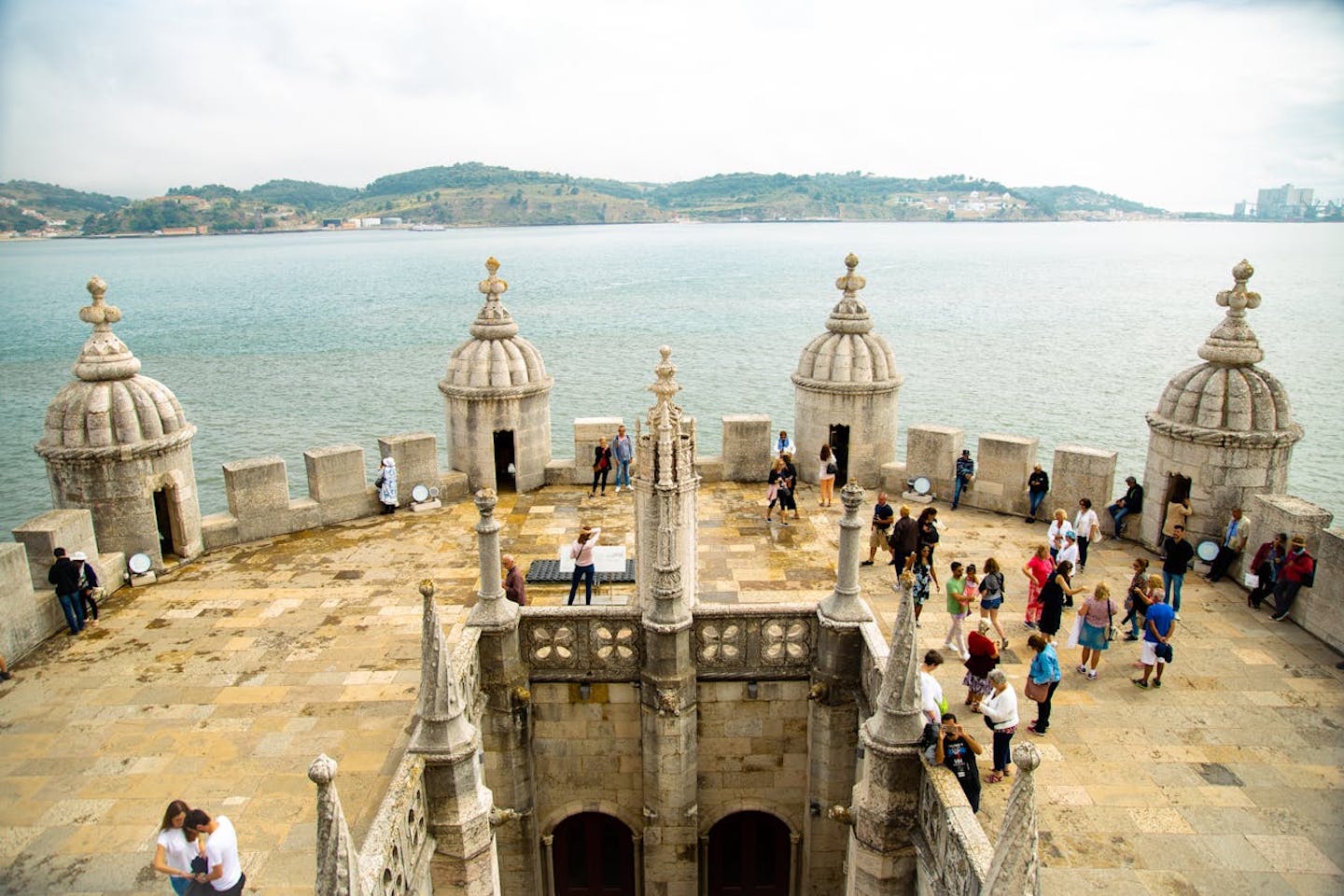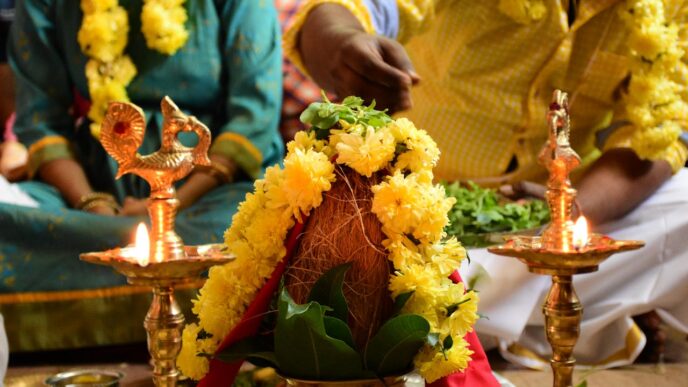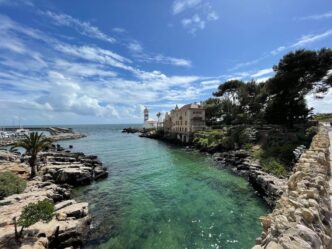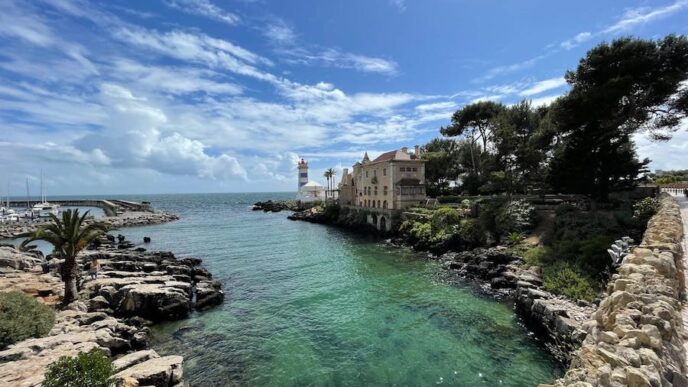Monastery of the Hieronymites and Tower of Belém in Lisbon
The Monastery of Jerónimos and the Tower of Belém are two of the most important landmarks in Lisbon, Portugal. They are located in the Belém district along the beautiful Tagus River. These sites are not just stunning to look at; they also have a rich history connected to the Age of Discovery.
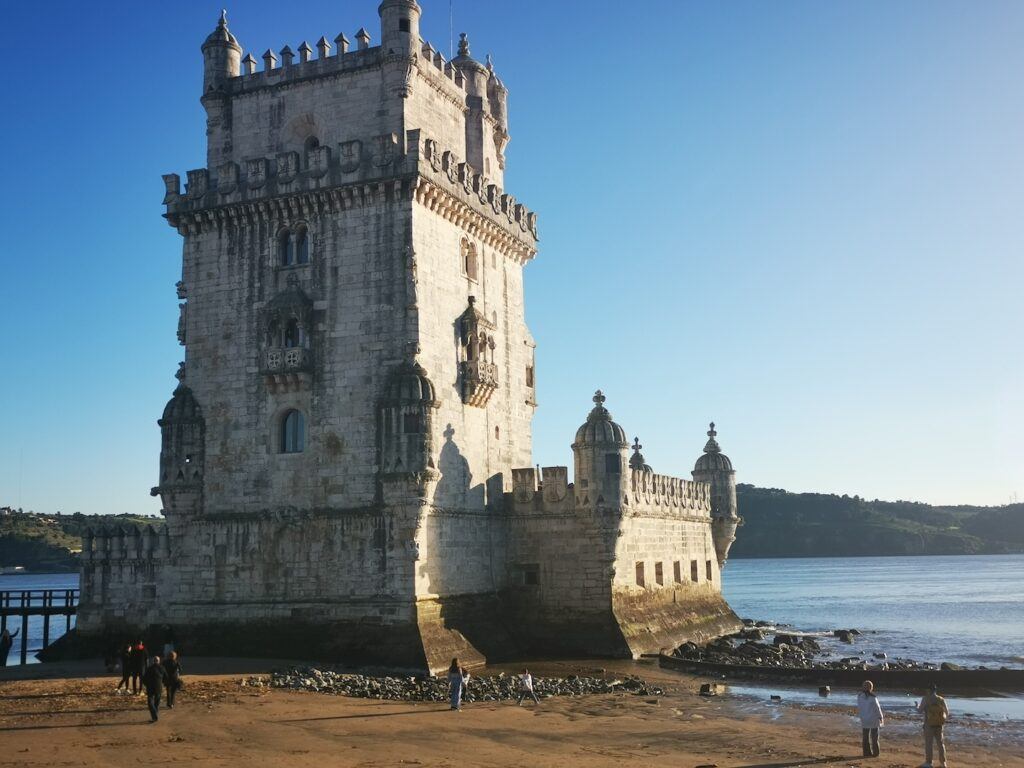
Historical Significance
- The Monastery was built in the early 16th century to honor Prince Henry the Navigator.
- It served as a place for monks to pray for the king and sailors embarking on voyages.
- The Tower was constructed to protect the port of Lisbon and celebrate Vasco da Gama’s voyages.
Architectural Features
- Both structures showcase the Manueline style, a unique Portuguese architectural style.
- The Monastery features intricate stone carvings and beautiful arches.
- The Tower is adorned with decorative elements like ropes and sea motifs, symbolizing Portugal’s maritime history.
Role in Maritime Discoveries
- These sites are symbols of Portugal’s exploration during the 15th and 16th centuries.
- They mark the beginning of many important voyages that expanded the world’s knowledge.
- The Monastery and Tower remind us of the bravery and ambition of Portuguese explorers who sailed into the unknown.
Convent of Christ in Tomar
The Convent of Christ in Tomar is a remarkable site with a rich history. Founded in the 12th century, it started as a stronghold for the Templars. After the Templar order was dissolved, it became the home of the Knights of the Order of Christ, who played a significant role in Portugal’s maritime explorations during the 15th century. This site is a true representation of Portugal’s artistic evolution, showcasing various architectural styles over the centuries.
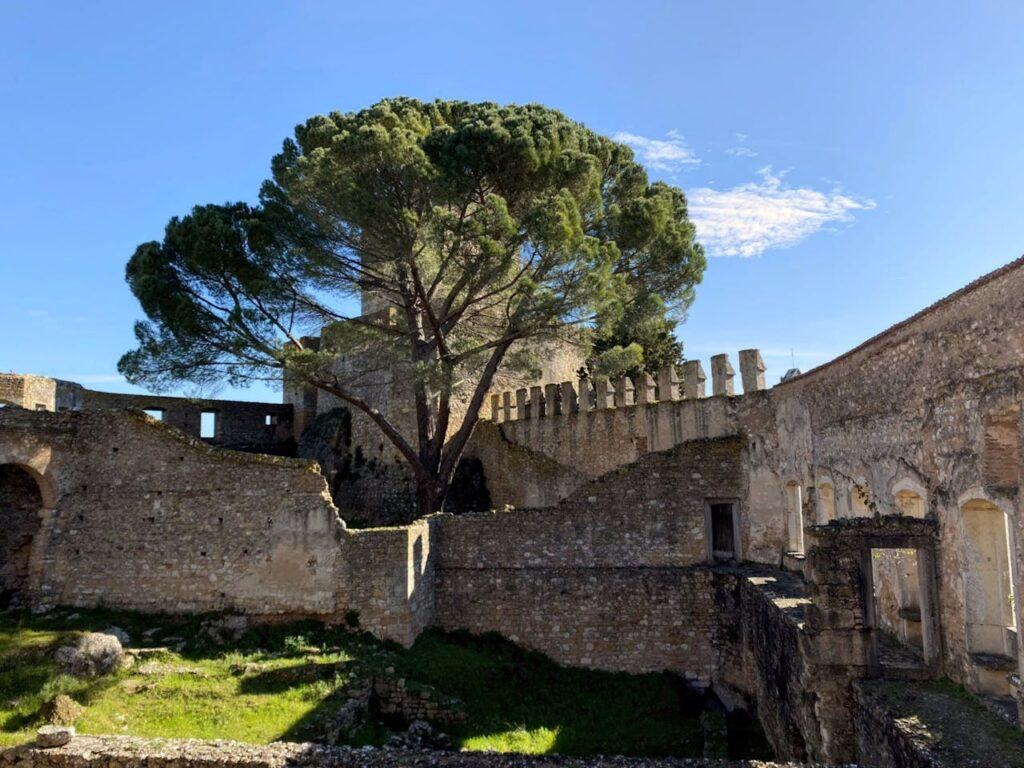
Knights Templar Influence
- The convent was originally established as a Templar stronghold.
- It served as a base for the Knights of the Order of Christ after the Templars were disbanded.
- The site reflects the military and religious significance of the Templars in Portugal.
Architectural Highlights
- The convent features a mix of Romanesque, Gothic, and Manueline styles.
- Notable structures include the Charola, a round church that symbolizes Templar architecture.
- The intricate details in the Manueline style highlight Portugal’s unique artistic heritage.
Historical Context
- The convent’s construction spanned several centuries, showcasing the evolution of Portuguese art.
- It played a crucial role in supporting Portugal’s maritime discoveries.
- Today, it stands as a UNESCO World Heritage Site, attracting visitors from around the world, proving that the Convent of Christ is worth a visit. It truly lives up to its designation as a UNESCO World Heritage Site, with extensive buildings and beautiful grounds.
Historic Centre of Oporto, Luiz I Bridge and Monastery of Serra do Pilar
The Historic Centre of Oporto is a vibrant area that showcases the rich history and culture of Portugal. Nestled along the banks of the Douro River, this UNESCO World Heritage site is known for its stunning architecture and lively atmosphere.
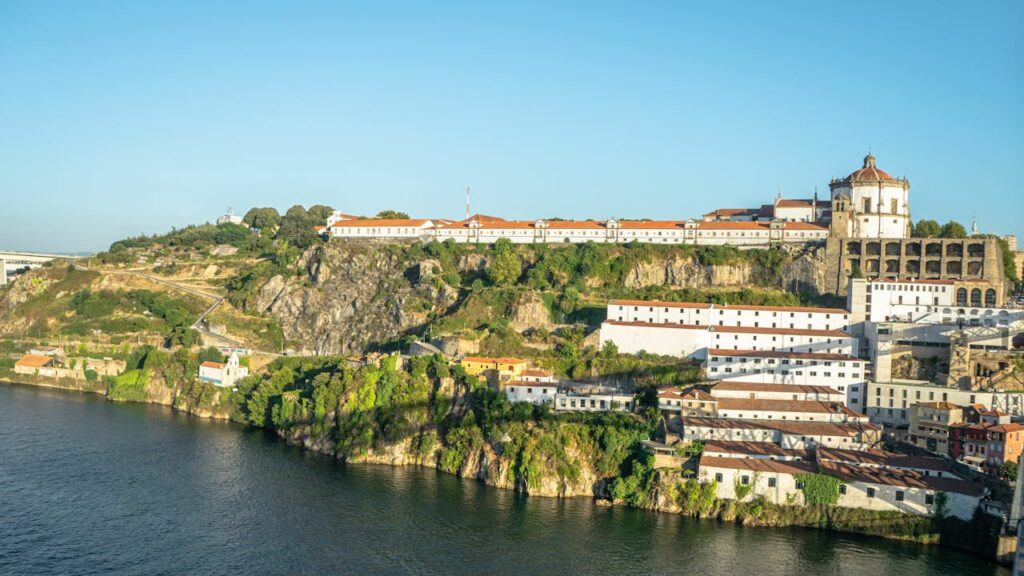
Urban Development
- Ancient Roots: Oporto has been inhabited since Roman times, originally starting as a Phoenician trade settlement.
- Architectural Evolution: The city features a mix of styles, including Romanesque, Manueline, and Neoclassical, reflecting its long history.
- Cultural Hub: The area has transformed into a center for arts and culture, attracting visitors from around the world.
Architectural Marvels
- Luiz I Bridge: This iconic double-decker bridge connects Oporto to Vila Nova de Gaia and offers breathtaking views of the river and city.
- Monastery of Serra do Pilar: A stunning example of Manueline architecture, this monastery provides a glimpse into the past and is a popular spot for tourists.
- Historic Buildings: The Cathedral and the Stock Exchange Palace are just a few of the remarkable structures that tell the story of Oporto’s architectural heritage.
Cultural Importance
- Culinary Delights: Oporto is famous for its port wine, and the wine cellars along the river are a must-visit for any food lover.
- Festivals and Events: The city hosts various cultural events throughout the year, celebrating its rich traditions and vibrant community.
- Tourist Attraction: As a UNESCO site, Oporto draws millions of visitors each year, eager to experience its unique blend of history and modern life.
In summary, the Historic Centre of Oporto is not just a place to visit; it’s an experience that connects you to the heart of Portugal’s past and present. Whether you’re exploring the historical wonders of Portugal or simply enjoying the local cuisine, Oporto offers something for everyone.
Laurisilva of Madeira

Biodiversity and Ecology
The Laurisilva of Madeira is a unique forest that covers about 15,000 hectares, which is roughly 20% of the island. This forest is special because it has survived many years of human activity. Here are some key points about its biodiversity:
- Home to many species: The forest is a habitat for numerous plants and animals, some of which are found nowhere else in the world.
- Subtropical climate: The area has a warm, moist climate that supports a rich variety of life.
- Endangered species: Many of the species here are threatened, making conservation efforts crucial.
Conservation Efforts
To protect this precious ecosystem, several initiatives have been put in place:
- Protected areas: The Laurisilva is designated as a UNESCO World Heritage Site, which helps safeguard it from development.
- Research programs: Scientists study the forest to understand its ecology and find ways to preserve it.
- Community involvement: Local communities are encouraged to participate in conservation activities, raising awareness about the importance of the forest.
Tourism and Accessibility
The Laurisilva of Madeira attracts many visitors each year. Here’s how it is made accessible:
- Hiking trails: There are numerous trails that allow visitors to explore the forest while minimizing impact on the environment.
- Guided tours: Local guides offer tours that educate visitors about the forest’s unique features and its importance.
- Visitor centers: These centers provide information and resources to help tourists understand the significance of the Laurisilva.
Overall, the Laurisilva of Madeira is not just a beautiful landscape; it is a vital part of our planet’s heritage, showcasing the rich biodiversity and the need for conservation efforts.
Prehistoric Rock Art Sites in the Côa Valley and Siega Verde
Archaeological Discoveries
The prehistoric rock art sites in the Côa Valley and Siega Verde are located on the border of Portugal and Spain. These sites are home to some of the most important examples of ancient rock art in Europe. Here are some key points about these discoveries:
- The art dates back to between 22,000 and 10,000 years ago.
- It includes images of animals, humans, and abstract symbols.
- The rock carvings provide a glimpse into the lives and beliefs of early human societies.
Artistic Significance
The rock art is not just beautiful; it holds great importance for understanding early human culture. Some highlights include:
- Over 5,000 figures have been identified, showcasing the creativity of our ancestors.
- The art reflects the evolution of human expression over thousands of years.
- It offers insights into the social and spiritual lives of prehistoric people.
Conservation Challenges
Despite its significance, the preservation of these sites faces several challenges:
- Natural erosion and weathering can damage the rock art.
- Human activities, such as tourism, pose risks to the integrity of the sites.
- Ongoing conservation efforts are crucial to protect this cultural treasure for future generations.
Cultural Landscape of Sintra
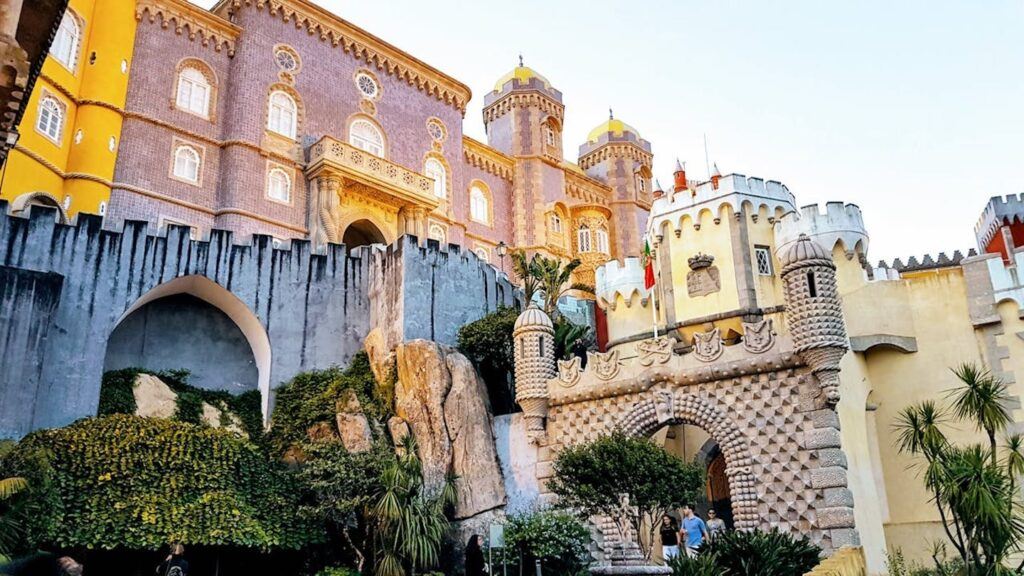
Sintra is a stunning area known for its beautiful palaces, gardens, and natural scenery. This cultural landscape is a mix of historical sites and nature, making it a unique place to visit. Here are some key points about Sintra:
Historical Background
- Palácio Nacional de Sintra: This royal palace dates back to the 14th century and showcases a mix of Gothic, Manueline, and Moorish styles.
- Castle of the Moors: A medieval fortress from the 8th century, it offers breathtaking views and has impressive walls.
- Pena Palace: Built in the 18th century, this colorful palace combines various architectural styles, making it a must-see.
Architectural Diversity
- The area features a variety of architectural styles, including Gothic, Renaissance, and Manueline.
- Many buildings are surrounded by lush gardens and parks, enhancing their beauty.
- The Park and Palace of Monserrate is another highlight, showcasing the Romantic style.
Natural Beauty
- Sintra is located in the Sintra Mountains, which are home to diverse plant and animal life.
- The Parque Natural de Sintra-Cascais is a protected area that offers hiking trails and stunning views.
- The combination of nature and architecture creates a magical atmosphere that attracts visitors from all over the world.
Sintra was recognized as a UNESCO World Heritage Site in 1995 for its outstanding cultural and natural value, making it a significant destination for history and nature lovers alike.
Sanctuary of Bom Jesus do Monte in Braga
Religious Importance
The Sanctuary of Bom Jesus do Monte is a significant religious site located on the slopes of Mount Espinho, just above the city of Braga. It is a popular pilgrimage destination, attracting many visitors each year. The sanctuary is dedicated to the Bom Jesus, or Good Jesus, and is a place where people come to seek spiritual solace and connection.
Architectural Design
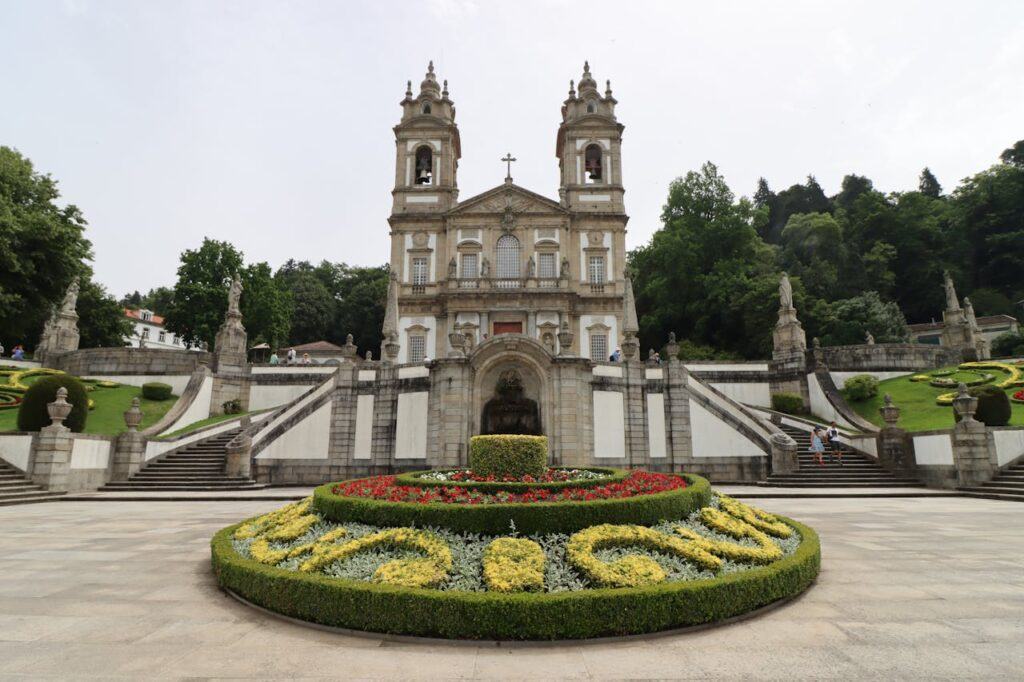
The sanctuary showcases a mix of Baroque, Rococo, and Neoclassical architectural styles. Some key features include:
- Stairway of the Five Senses: This impressive stairway symbolizes the journey of faith and is adorned with beautiful sculptures and fountains.
- Basilica of Bom Jesus: The main church is a stunning example of Baroque architecture, with intricate details and a grand altar.
- Via Sacra: A long path leading to the sanctuary, representing the Stations of the Cross, enhances the spiritual experience for visitors.
Visitor Experience
Visiting the sanctuary offers a unique experience for everyone. Here are some highlights:
- Scenic Views: The location provides breathtaking views of Braga and the surrounding landscape.
- Cultural Events: Throughout the year, various religious and cultural events take place, enriching the visitor experience.
- Accessibility: The site is accessible by a funicular railway, making it easy for everyone to reach the top.
The Sanctuary of Bom Jesus do Monte is not just a religious site; it is a place where history, architecture, and nature come together, making it a must-visit for anyone exploring Portugal’s rich heritage.
Monastery of Batalha
The Monastery of Batalha, also known as the Monastery of Santa Maria da Vitória, is a stunning example of Gothic architecture. Built in the early 15th century, it commemorates the Battle of Aljubarrota, where the Portuguese triumphed over the Castilians in 1385. This site was recognized as a UNESCO World Heritage Site in 1983.
Historical Context
- The monastery was commissioned by King João I to honor the victory at the Battle of Aljubarrota.
- It served as a burial site for the Portuguese royal family, showcasing its importance in national history.
- The construction reflects the political and cultural aspirations of Portugal during the late Middle Ages.
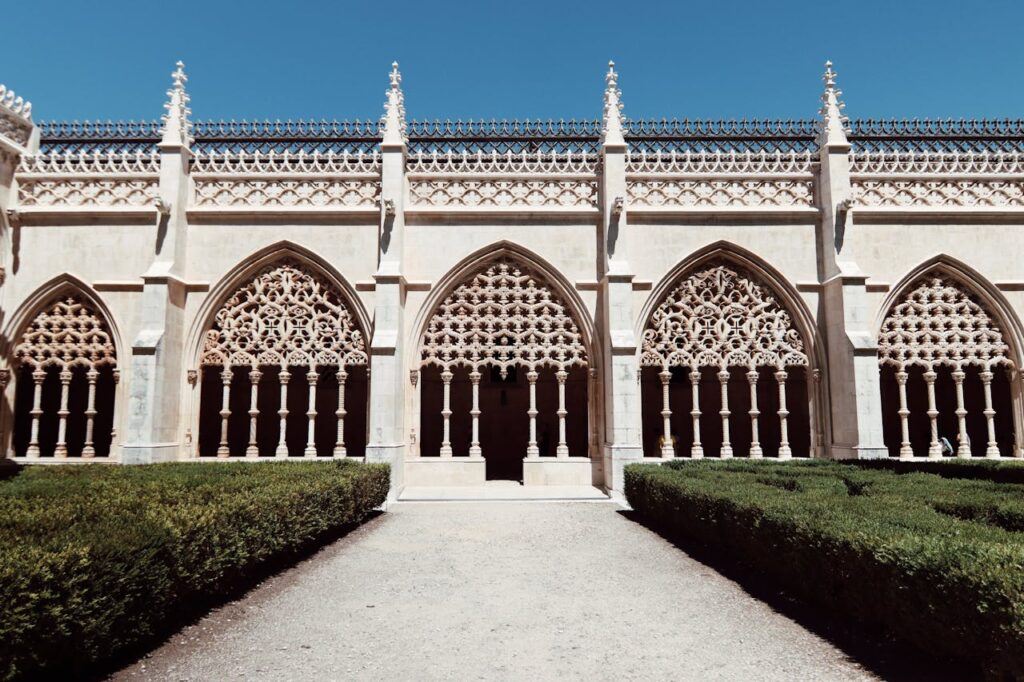
Architectural Style
- The monastery features a mix of Gothic and Manueline styles, making it unique in its design.
- Key elements include intricate stone carvings and stunning stained glass windows.
- The cloister is particularly notable for its elaborate decorations and serene atmosphere.
Cultural Impact
- The Monastery of Batalha has influenced Portuguese art and architecture for centuries.
- It remains a popular tourist destination, attracting visitors from around the world.
- The site is often used for cultural events, highlighting its ongoing relevance in Portuguese society.
Frequently Asked Questions
What is a UNESCO World Heritage Site?
A UNESCO World Heritage Site is a place recognized by the United Nations for its special cultural or natural importance. These sites are protected because they have unique features that are valuable for everyone.
How many World Heritage Sites are in Portugal?
Portugal has 17 World Heritage Sites that are officially recognized by UNESCO. There are also 18 other sites on a tentative list.
Why are the Monastery of the Hieronymites and the Tower of Belém important?
These sites are important because they represent Portugal’s rich maritime history and are examples of beautiful architecture from the Age of Discovery.
What makes the Laurisilva of Madeira a unique site?
The Laurisilva of Madeira is special because it is the only natural UNESCO site in Portugal. It is home to many unique plants and animals and is important for conservation.
How can I visit these World Heritage Sites?
Many of the World Heritage Sites in Portugal are open to the public. You can visit them by planning a trip to the locations, and there are often guided tours available.
What criteria does a site need to meet to be listed as a World Heritage Site?
To be listed as a World Heritage Site, a location must meet at least one of ten criteria set by UNESCO, which include cultural significance, natural beauty, and historical importance.

